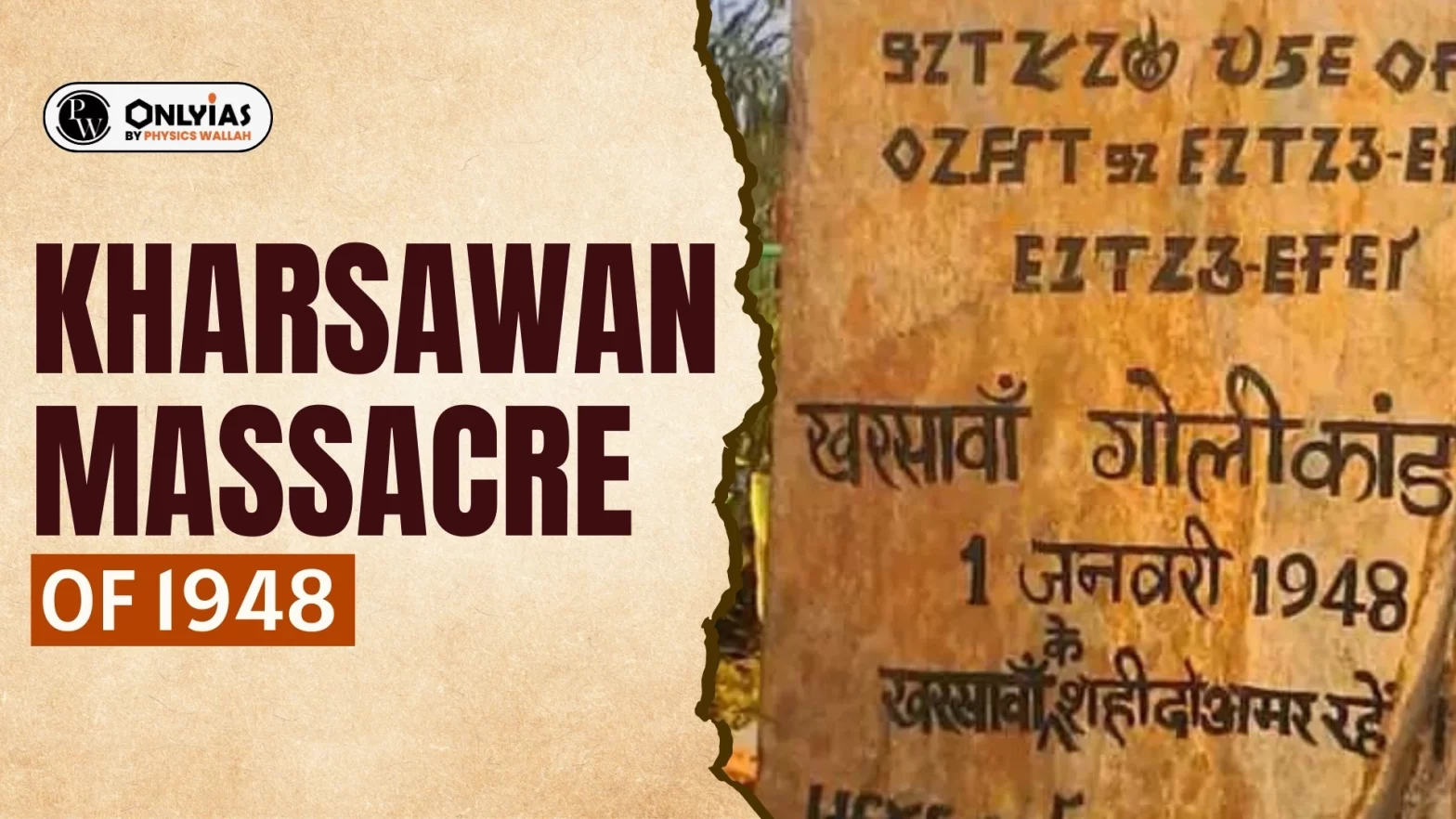Context: This editorial is based on the news “Remembering independent India’s ‘Jallianwala Bagh’: The Kharsawan massacre of 1948” which was published in the Indian Express. On January 1, 1948, the town of Kharsawan in present-day Jharkhand witnessed a massacre similar to Jallianwala Bagh in 1919. Police opened fire at a crowd gathered for a protest and the weekly haat (market), killing hundreds, or by some accounts, thousands of Adivasis.
Kharsawan Massacre of 1948: Background
- Partition of Bengal Presidency: In 1912, the Bengal Presidency was partitioned to create Bihar and Orissa Province.
- Demand for a Separate Tribal State: Within this new province, there existed a large Adivasi population with its distinct culture, and many grievances with both the British and non-tribal populations. Thus, in 1912, the demand for a separate tribal state was raised for the first time.
- Report of the Simon Commission, 1930: It observed that the province of Bihar and Orissa is the most artificial unit as it was formed by bringing under a single administration three areas which differ in physical features, many social, linguistic and cultural characteristics.
- Unheard Voices led to Further Struggle: While Orissa was carved out in 1936, Adivasis’ demands remained unheard. In 1938 the Adivasi Mahasabha was formed to continue the struggle, with Jaipal Singh Munda, former captain of the Indian hockey team, emerging as its tallest leader.
The Problem of Kharsawan’s Merger with Orissa
- Location of Kharsawan: It was a small princely state that after independence decided to accede to the Union of India and join the state of Orissa.
- No Support of Merger by Adivasis: Most Adivasis wanted a separate Adivasi state.
The Kharsawan Massacre of 1948
- Protest on the Merger Day: In protest, a huge meeting was called at Kharsawan on January 1, 1948, the day when the merger was to take place. Jaipal Munda himself was supposed to be present and address the crowd (however, due to some reason, he could not come) and more than 50 thousand tribals gathered in Kharsawan.
- Open Firing by the Police: The crowd was restive and surrounded by the police. Suddenly, the police opened fire with their guns, resulting in a massacre.
The Unheard Pain of Kharsawan Massacre of 1948
- High Death Toll: The dead bodies were disposed of in a well and dumped in the jungle, and many injured were denied treatment until the next day.
- The then Orissa government confirmed only 35 dead. However, actual numbers are likely to have been far higher. In Memoir of a Bygone Era (2000), PK Deo, stated that at least 2,000 Adivasis were killed, and many more were likely injured.
- No Clarity till Now: As to who was responsible for ordering the massacre, there is also no clarity. Several committees were made and investigations carried out, but no report came out.
Conclusion:
Today, a memorial stands at the marketplace in Kharsawan, which some have described as a “political pilgrimage” site. However, it is a reminder of the Kharsawan Massacre that India faced during its transition to independence and the pain and issues of tribal rights and recognition in history.
| Prelims Question (2015)
With reference to Rowlatt Satyagraha, which of the following statements is/are correct ?
1. The Rowlatt Act was based on the recommendations of the ‘Sedition Committee’.
2. In Rowlatt Satyagraha, Gandhiji tried to utilize the Home Rule League.
3. Demonstrations against the arrival of Simon Commission coincided with Rowlatt Satyagraha.
Select the correct answer using the codes given below.
(a) 1 only
(b) 1 and 2 only
(c) 2 and 3 only
(d) 1, 2 and 3
Ans: (b) |
![]() 3 Jan 2024
3 Jan 2024

